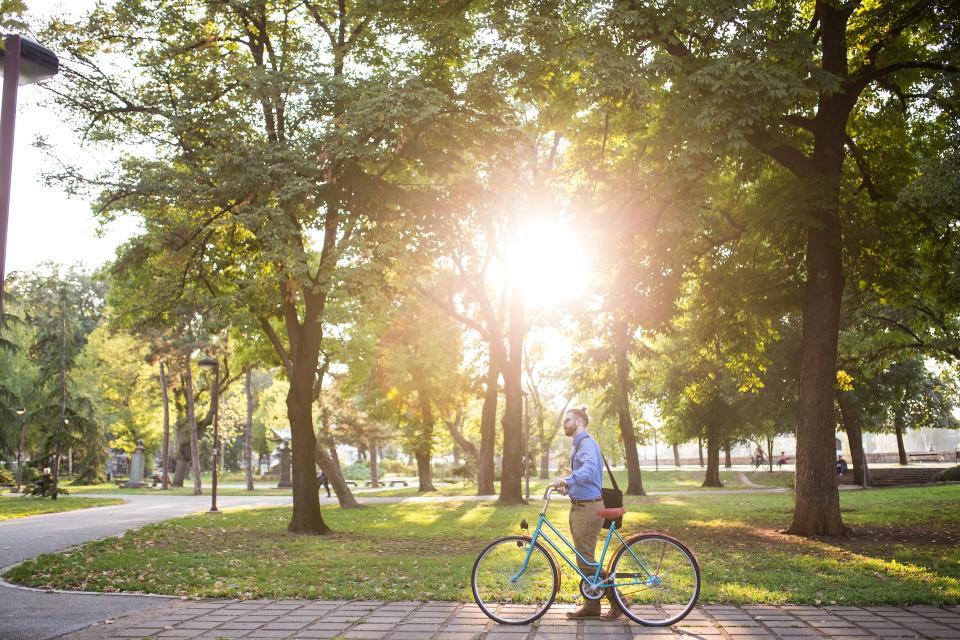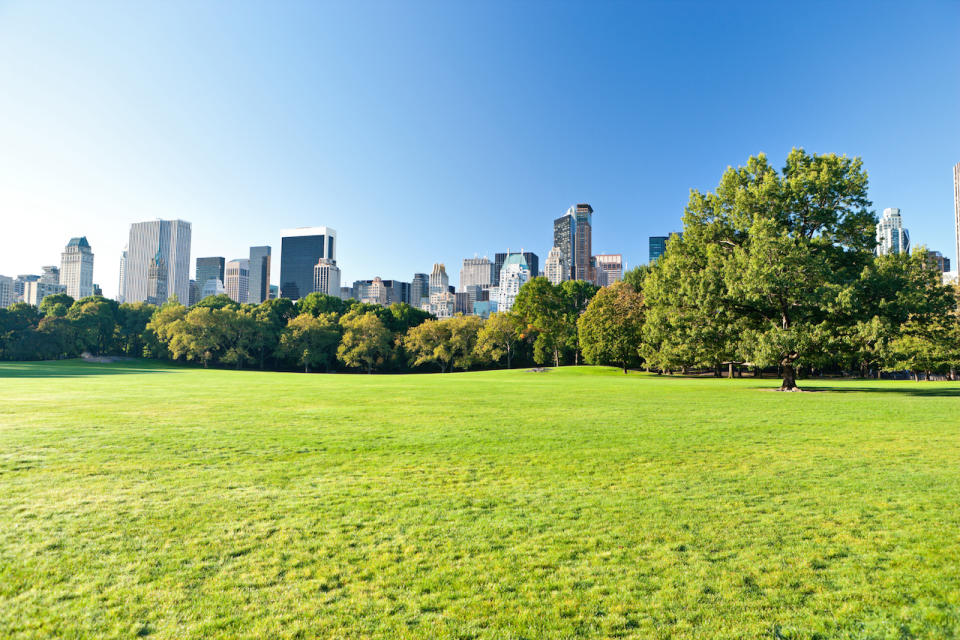How green spaces can keep urban cities cool in a warming world
With the frequency of extreme weather events such as heat domes, finding ways to keep communities cool has never been more important.
Communities are increasingly turning to nature-based solutions such as drought-tolerant gardens, which have become popular in an effort to create cooling, sustainable landscapes that require minimal water. Earlier this year, Metro Vancouver released a list of more than 300 tree species that have been assessed for their suitability to the current and projected future climate in the region.
DON'T MISS: Droughts can be tough reminders of importance of water conservation
"When we incorporate development, what often happens is we remove canopy cover. When we remove canopy cover, we increase the urban heat-island (UHI) effect. So we make it so that the spaces aren't necessarily as nice," said Andrew Almas, assistant professor of teaching in the faculty of forestry at the University of British Columbia (UBC) and urban forestry expert, in a recent interview with Mia Gordon, video journalist at The Weather Network.
"Essentially, what we do is, when we push those boundaries we stress out the trees. When we have young trees [and] young plants, they're going to have less access to water anyway because their root systems aren't as robust."

(Getty Images - 862160696)
Canopy important to reduce heating of cities
As buildings, roads and other infrastructure absorb heat, temperatures around them can be several degrees hotter compared to outlying regions, Almas said in a news release.
Providing plenty of shade and drought resistance in landscaping plans to offset the scorching heat and resulting water shortages is "crucial," he said.
"We care about the well-being of people, and in cities, we have all kinds of clamouring for how [the] space is used," said Almas, in the interview with The Weather Network. "When we look at all the various goals that people have about how space is used, we see development happening all across Metro Vancouver."

(Getty Images-517627722)
With B.C.'s current drought and heat, many residents have seen their lawns "sort of browning" and not being able to retain the water as usual, he said.
"They're not providing as much in terms of water sequestration for the other plants that are around. We have to think about,'well, what plants are we going to have in place that are going to retain the water?" said Almas. "How can we get some sort of symbiotic relationship between the plants that we've planted?"
SEE ALSO: No reprieve in sight for B.C.'s prolonged drought and wildfires
In a recent interview with The Weather Network, John Richardson, a UBC freshwater scientist and professor in the faculty of forestry, echoed Almas' message about the roles our green spaces provide and said they are important allies to maintain cooler conditions within cities.
He noted that a street with tree cover can often be two to four degrees cooler than areas without it, and sometimes even more.
"We know the heat islands that are created by cities can be really devastating for many, many populations," said Richardson. "Having tree cover can really reduce the requirement for people to have air conditioning or other uses that might require water."

(UBC faculty of forestry/Paulo Ramos)
"It's unfortunate when governments start to think about just removing that [tree cover] to build more houses. I know we have a housing crisis, but that may not be the solution."
Factoring in tree types in green spaces that can survive weather extremes
As an example of what types of trees may be most suitable for green spaces that can offset temperature extremes, Metro Vancouver released a list of more than 300 tree species that have been assessed for their suitability to the current and projected future climate in the region.
"Alarmingly, a lot of the native species are in that last year where, really, we should just be planting them in these areas that always have access to water. For instance, the western red cedar," said Almas.
When considering species that will be shade-tolerant, some that come to mind are the Oregon grape or holly-leaved barberry, snowberry, Douglas fir and maple trees, Almas said.
"And if we look at, for instance, the Interior of British Columbia, it can give us sort of a good analogue, as well," said Almas. "If we want wildflowers, let's go and look at [the Interior] because it has slightly more drought than we do here."

(Getty Images-157679928)
He noted that optimal species will vary by region because of different types of extremes experienced during the four seasons.
"In a problematic way, we start to get into species that have a lot of tolerance for a lot of stressors. This is the way we plant in cities anyway because there are so many added stressors to the environment," said Almas. "We select species that are fairly resilient in most stressful situations."
When contemplating water intake with any green space, you have to consider trees that are going to be more drought-resistant, Almas said.
"We turn up the stress on trees" with the increase in hotter and drier summers.
WATCH: Dishwasher or sink? Tips for conserving water during widespread B.C. drought
"When we have year-after-year of those stresses, we start to see that some of the more vulnerable trees and plants are dying off," said Almas.
"First and foremost," Almas said, mature trees need to be maintained wherever possible. When new trees are planted, those will also need to be watered.
SEE ALSO: Green spaces often neglect this key demographic: UBC study
Not only will a green space do wonders for cooling the surrounding area, it will also benefit people's health, both physical and mental.
"We've seen for a long time...this idea that being around greenery, hearing the sounds, being in the shade [and] having it a little cooler is good for our mental health, and our well-being. So we want to have these spaces," said Almas.
It's 'key' for residents to manage local greenery
The UBC assistant professor stressed that if we want to incorporate more of the green spaces, we need to be "intentional" in how we will maintain them during the planning process.
"We can either not maintain them at all and then people don't use them, or when we maintain them, we need to think about what are the species that are going to do well into the future because we also don't want to be removing a whole bunch of dead trees," said Almas. "This is sort of the balance that we strike."
Almas added it's key to have residents involved in managing the greenery in municipalities.
"When municipalities are planting a new tree in front of your house, even though it's a municipal tree, we want residents to be watering that," said Almas. "We want residents to be the stewards of the greenery in their particular neighbourhood. When people feel attachment to the greenery, they're less likely to dispose of it easily."
WATCH: Green space plans are failing to include this important age group
Thumbnail courtesy of Getty Images-1435892898.
Follow Nathan Howes on X, the platform formerly known as Twitter.


